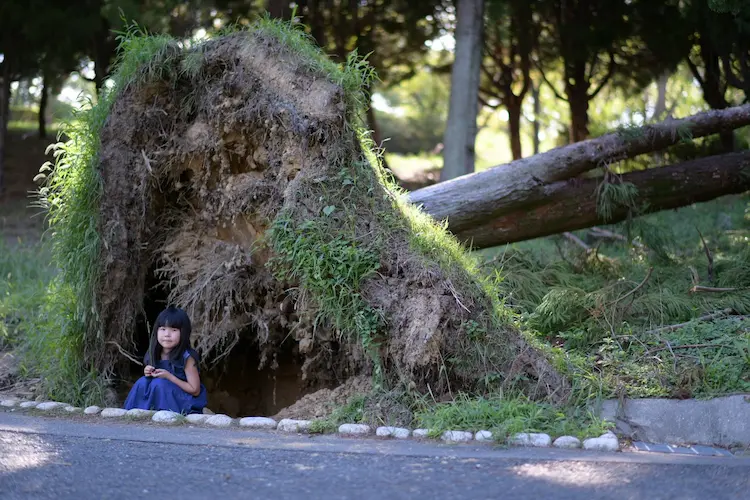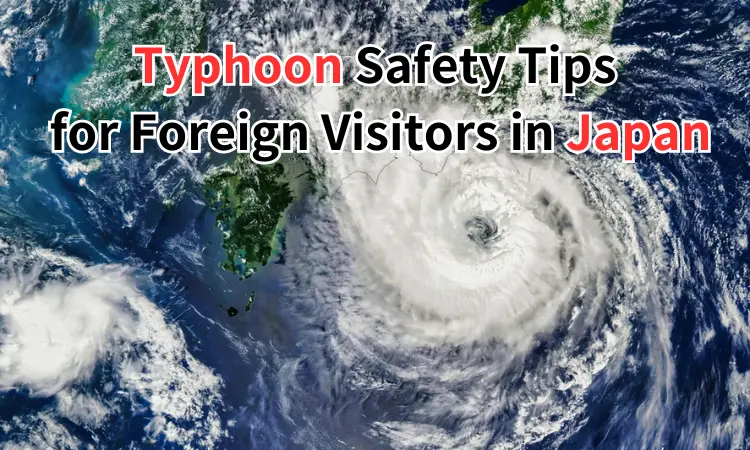Typhoon Safety Tips for Foreign Visitors in Japan
Japan, an island nation, frequently experiences typhoons, particularly between May and October, with the peak season from July to September. These powerful storms can disrupt travel plans, cause transportation delays, and even pose safety risks. While typhoons can be intimidating, being well-prepared can help you stay safe and even find ways to enjoy your stay despite the weather. In this guide, we’ll share practical tips and personal experiences to help you navigate a typhoon during your visit to Japan.
Before the Typhoon Hits: Preparation Tips
One of the most important steps is to stay informed. Check reliable weather apps like Japan Meteorological Agency’s English website or NHK World, which provide up-to-date information on typhoon paths and safety advisories. If you’re staying at a hotel, ask the staff about nearby shelters and the hotel’s emergency procedures.
When a typhoon is approaching, it’s wise to stock up on essentials like bottled water, snacks, and portable chargers. Remember, it’s better to be over-prepared. I remember as a child, whenever a “Bofu Keiho” (storm warning) was issued, schools would close. While it was a bit scary, I secretly looked forward to the excitement of a day off from school. Even now, this memory reminds me that preparation is key, and having a plan makes all the difference.
During the Typhoon: How to Stay Safe
As the typhoon nears, stay indoors and avoid windows. It’s crucial to follow local advisories and resist the temptation to venture outside, even if conditions appear calm. Public transport, including flights, trains, and the Shinkansen, often stops during severe weather. It’s best to stay put in your hotel or wherever you are lodging.
During a typhoon, the ocean and rivers become extremely dangerous, so stay away from them at all costs!
Speaking from experience, the disruption to transport can be significant. Once, I had a flight from Osaka to Okinawa booked on a day when a typhoon was expected to hit. I was bracing for cancellations, but the typhoon weakened into a tropical depression just in time, and my flight went ahead as planned. It’s a reminder that while typhoons often bring cancellations, it’s worth keeping an eye on the latest updates because conditions can change quickly. For severe typhoons, though, it’s better to reschedule early—hotel rooms fill up fast during these events.
Staying Informed: Accessing Reliable Information
During a typhoon, having access to reliable information can be your best ally. For English updates, NHK World provides excellent coverage, and many local apps offer English options. Set up push notifications on your weather apps to receive the latest alerts. Social media can also be a helpful tool, but be sure to follow official accounts like the Japan Meteorological Agency to avoid misinformation.
What to Do After the Typhoon Passes

Once the typhoon has passed, it’s essential to remain cautious. Check for fallen trees, flooding, or any other hazards before venturing out. Confirm with your accommodation or local authorities whether it is safe to explore. Public transport may take time to resume normal operations, so patience is necessary.
I recall a time when a major typhoon uprooted several large trees in the park near my house. It was a stark reminder not to underestimate the power of these storms. Always prioritize safety and follow local guidance on when it’s safe to leave.
Additional Tips: Making the Most of Your Time Indoors
If you find yourself stuck indoors, make the most of it! Many Japanese hotels and homes offer entertainment options like TV, board games, and online activities. Dive into Japanese culture through movies or try a virtual tour of a museum. Take advantage of convenience stores or food delivery services for meals.
During the typhoon, I stayed at home and watched a movie to pass the time. Since a typhoon usually takes only two to three hours to pass, focusing on a movie for that period can help distract from the fear and anxiety.
Conclusion: Staying Calm and Prepared
Facing a typhoon in Japan doesn’t have to be overwhelming. By staying informed, preparing ahead, and taking safety precautions seriously, you can ensure that you and your loved ones remain safe. And who knows—you might even find that your typhoon experience becomes a unique and unforgettable part of your Japanese adventure. Stay safe, stay prepared, and enjoy your journey in Japan!









